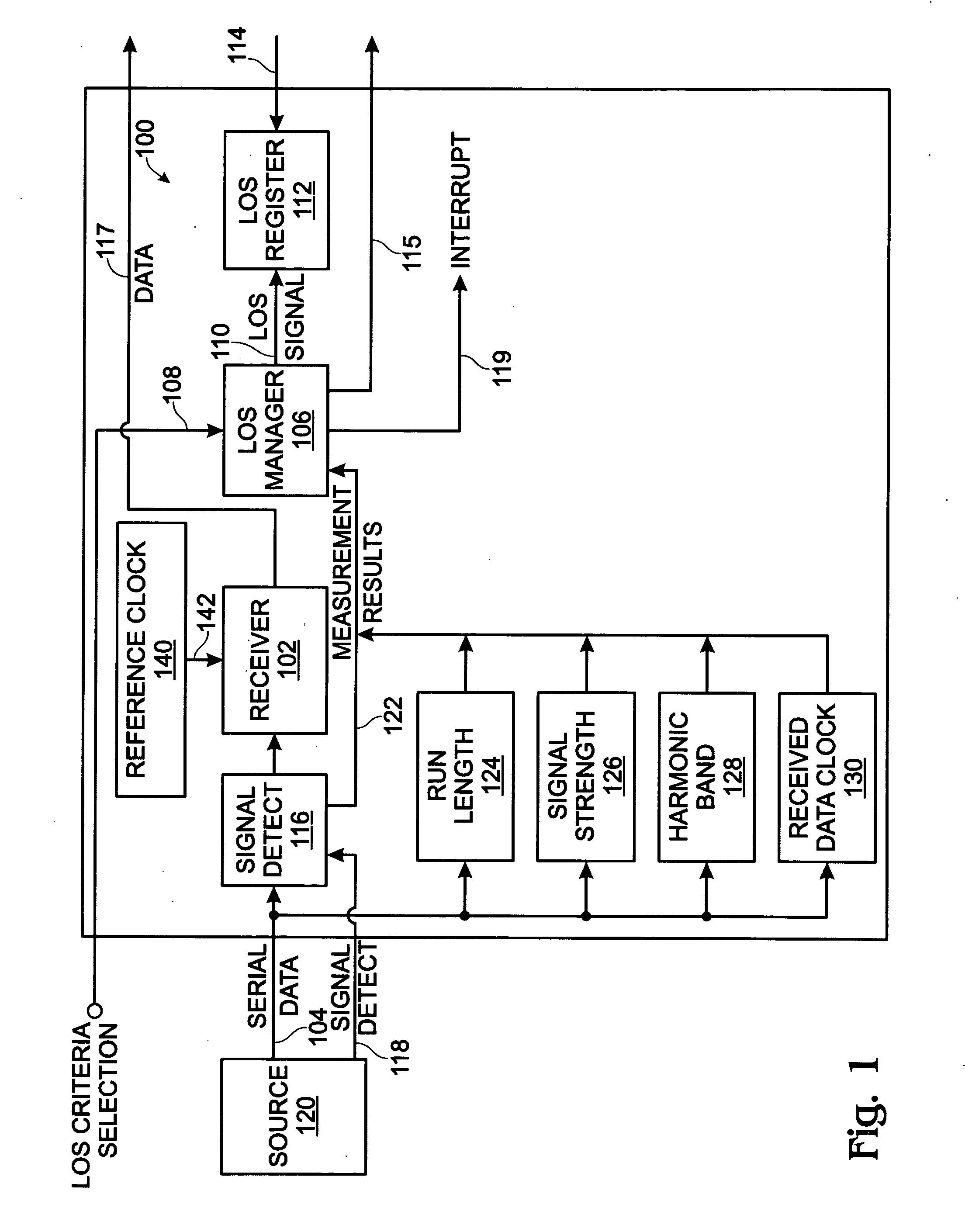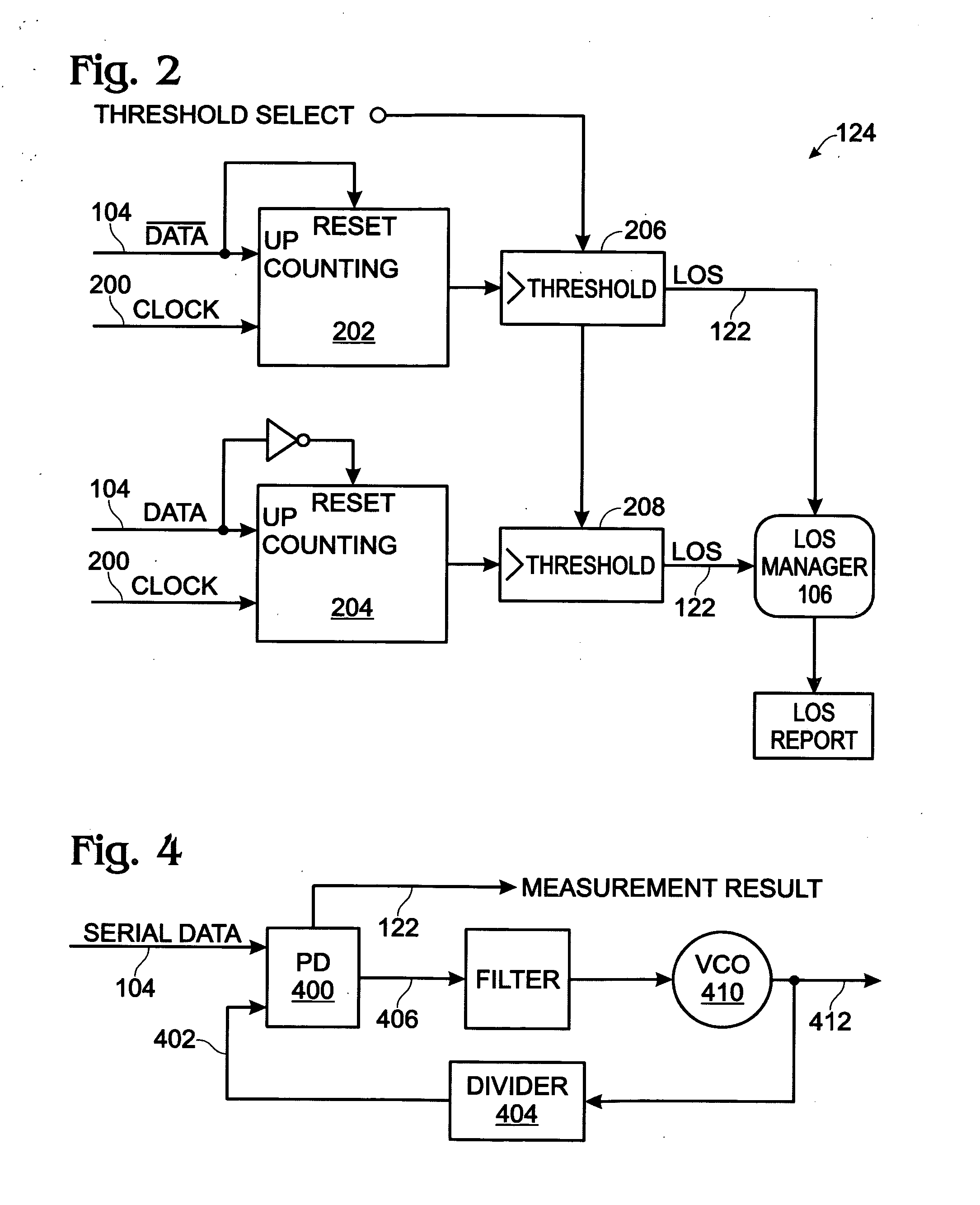Selectable loss of signal (LOS) criteria
a signal loss and criteria technology, applied in the field of digital communications, can solve the problems of loss of data, long recovery delay, and ineffective filtering of low frequency wander components
- Summary
- Abstract
- Description
- Claims
- Application Information
AI Technical Summary
Benefits of technology
Problems solved by technology
Method used
Image
Examples
Embodiment Construction
[0024]FIG. 1 is a schematic block diagram of a serial communications system with programmable loss of signal (LOS) criteria. The system 100 comprises a receiver 102 having a serial port interface on line 104 to receive a serial stream of digital data. The purpose of the receiver 102 is to deserialize the incoming data by recovering the clock and data. Typically, the data is passed in parallel form to a subsequent stage (not shown). For example, the receiver 102 may accept SONET, Gigabit Ethernet (GBE), Fibre Channel (FC), D1 Video, DTV, DV6000-1, HDTV, ESCON / FICON, digitally wrapped data, video, or FDDI. These formats are either known to use LOS signaling, or to be adaptable for optionally including some form of LOS signaling. An LOS manager 106 has an interface on line 108 to receive a LOS criteria selection signal. The LOS manager 106 selects LOS criteria and, in response to the serial stream of digital data failing to meet the selected LOS criteria, generates a LOS signal at an i...
PUM
 Login to View More
Login to View More Abstract
Description
Claims
Application Information
 Login to View More
Login to View More - R&D
- Intellectual Property
- Life Sciences
- Materials
- Tech Scout
- Unparalleled Data Quality
- Higher Quality Content
- 60% Fewer Hallucinations
Browse by: Latest US Patents, China's latest patents, Technical Efficacy Thesaurus, Application Domain, Technology Topic, Popular Technical Reports.
© 2025 PatSnap. All rights reserved.Legal|Privacy policy|Modern Slavery Act Transparency Statement|Sitemap|About US| Contact US: help@patsnap.com



